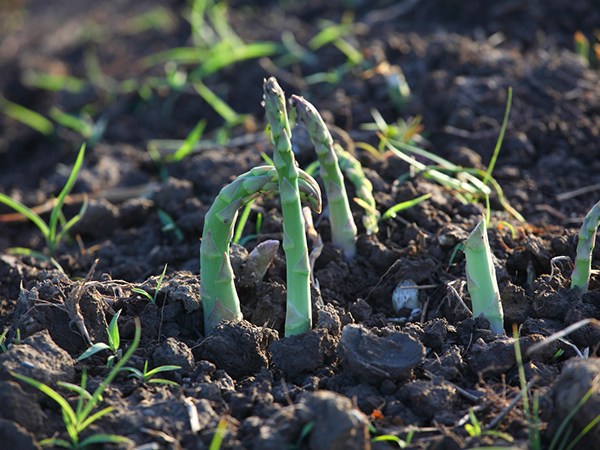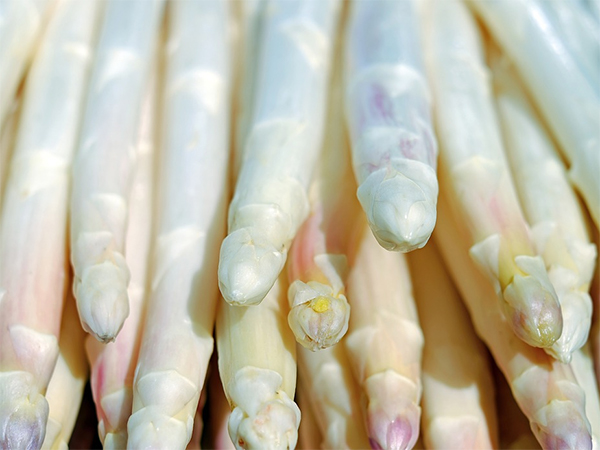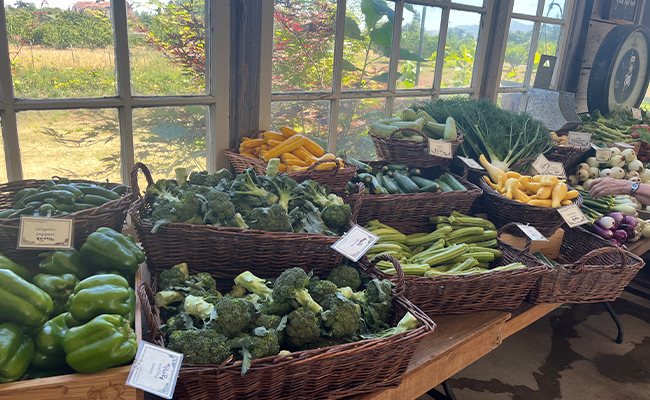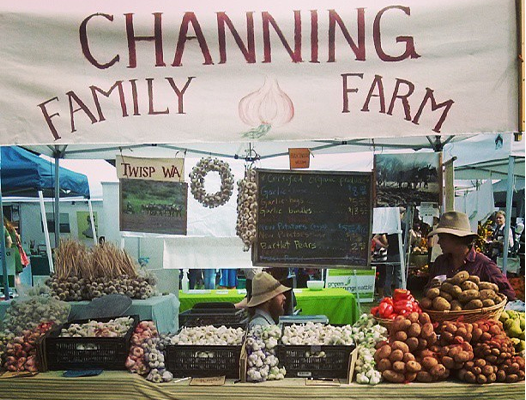Enjoying the Colors of Photosynthesis

Farm News
As we patiently wade through the rainy spring days and engage in soup tonics and bitter spring herbs like sorrel and dandelion greens, we are reminded early every morning by the birds that the mission is full speed ahead regardless of less than optimal light.
As most spring greens cherish and love light, there are a few favorite vegetables that actually prefer the dark tunnels, namely asparagus. Such a curious vegetable it is − always best enjoyed fresh and local as its sweetness diminishes from the moment it is harvested. The tender shoots of asparagus as we know are green, but there are also purple and white varieties. In fact there are over 300 different varieties of asparagus in the Mediterranean where they are highly revered.

White varieties are grown deep in the soil usually covered by either black plastic or burlap protecting the spears from sunlight, altering the normal process of photosynthesis. This technique is well known in the growing world as blanching. Purple varieties of asparagus actually turn green once they are cooked and taste very similar to the green varieties. Blanching techniques can be very expensive for the farmer and on our farm, we do not grow asparagus, however, we do delight in growing other beautiful, naturally white and pale vegetables like cauliflower, celeriac and parsnips. These wonderful veggies are adored in the winter and early spring and are thought to help in warding off heart disease and boosting bone health.
As we move into the coming months of fresh spring colors and flavors, we can take notice of the white vegetables and not leave them behind for the winter months, but add a little white to our peas and mint. We can appreciate all the dark and light colors of photosynthesis in the herbs, flowers and vegetables. And for those of you who want to experiment with blanched-grown asparagus, you can look for the tender white spears.
Don’t forget to find us on Instagram @fullcirclefarms.
– Wendy


Leave a Reply